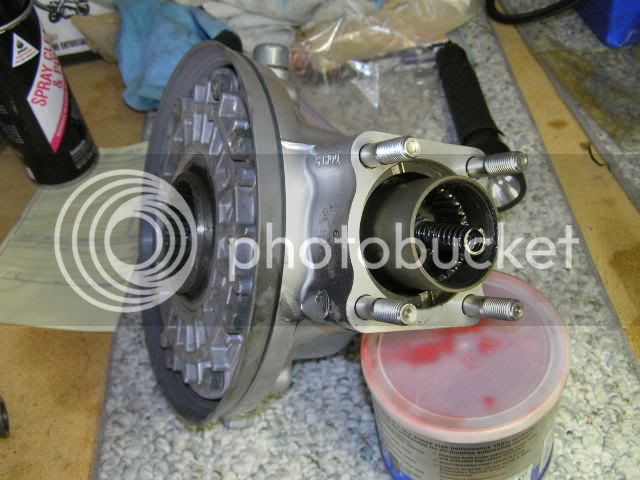The idea that the driveshaft yoke does not move on the output shaft as the suspension moves is complete and utter nonsense.
OK, so putting aside all of your personal insults and derogatory rhetoric, let's take a closer look at what you said above.
I do understand that the drive shaft needs to provide the ability to elongate as the suspension articulates. As I have said repeatedly,
all of that motion is provided for at the rear end of the shaft, where the driveshaft couples with the final drive.
Here is an excerpt from an excellent post done up by SkooterG way back in 2006:
https://www.fjrforum.com/forum/index.php?showtopic=7530]Driveshaft / Gear Coupling / Final Drive 101[/url] (a good read if you want to know how this stuff all fits together) :thumbsup:
And here is a photo of the pumpkin, and gear coupling with the driveshaft removed. See the spring in the center of the gear coupling? That is there to keep the driveshaft under tension as the swingarm pivots from normal movement. Any fore and aft movement of the driveshaft caused by the swingarms pivoting is done in the gear coupling with aid of the spring, and not at the universal joint. The spring is actually putting some pressure to push the driveshaft out of the gear coupling.
The forward splines do not move (slip) within the U-joint yoke's splines because the drive shaft is being forced all the way forward in that joint by the compression spring pushing from the rear end. All lengthening of the shaft required by wheel movement on the suspension is provided for at the back end of the shaft.
You may want to research things more closely before spewing your venomous commentary around. Like I said, it only makes you look bad.











































